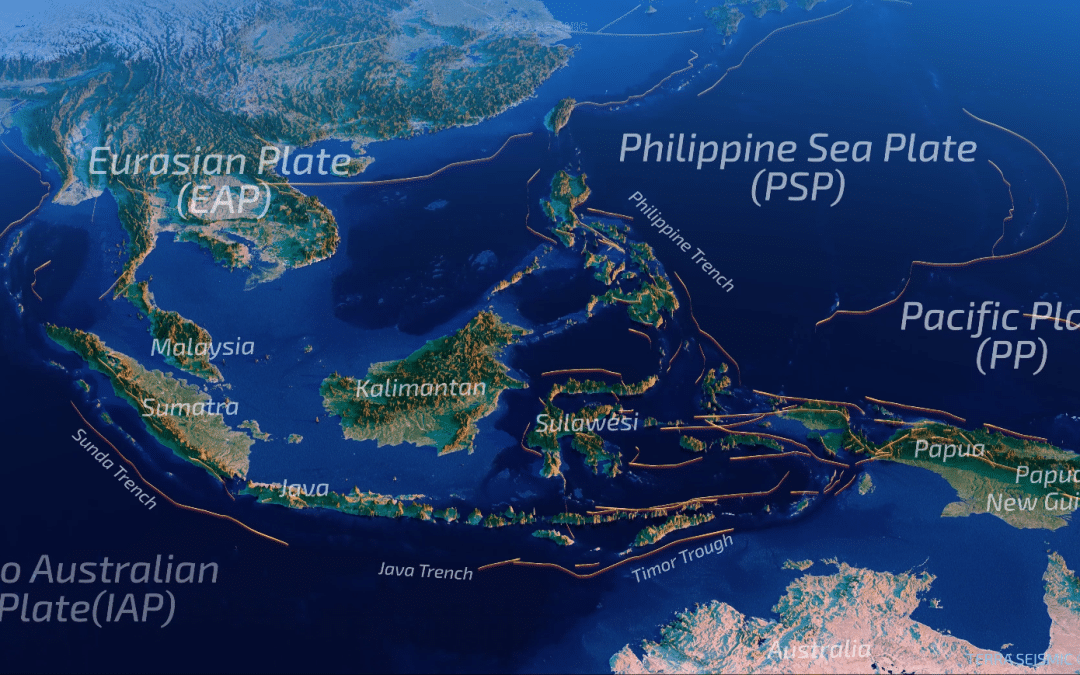Seismicity in Indonesia is primarily driven by its position at the convergence of several major tectonic plates, making it one of the most seismically active regions in the world. The country’s complex tectonic environment involves the interaction of the Eurasian Plate, the Australian Plate, the Philippine Sea Plate, and the Pacific Plate. Here are the key factors that define seismicity in Indonesia:
Subduction Zones: Indonesia has several significant subduction zones where one tectonic plate is being forced under another. These include the Sunda Trench (where the Australian Plate subducts beneath the Eurasian Plate) and the Java Trench. These zones are responsible for some of the region’s largest and most devastating earthquakes and tsunamis.
Megathrust Earthquakes: The subduction processes at these boundaries can generate megathrust earthquakes, among Earth’s most powerful. For instance, the 2004 Indian Ocean earthquake, which triggered a massive tsunami, was a megathrust event along the Sunda Trench.
Volcanic Activity: The subduction of oceanic plates beneath continental plates also leads to high volcanic activity, making Indonesia a part of the Pacific “Ring of Fire.” Volcanic earthquakes are frequent around the archipelago’s many active volcanoes.
Complex Plate Interactions: The interaction between plates nearby leads to various tectonic processes, including subduction, transform faults, and collision zones. Each contributes differently to seismic activity, creating a complex seismic landscape.
Crustal Earthquakes: In addition to subduction-related events, Indonesia also experiences crustal earthquakes due to local faults within the overriding plates. These can occur in areas far from the primary subduction zones but are still significant in damage and frequency.
Historical Seismicity: Indonesia has a long and detailed record of seismic events, which have shaped its geological study and preparedness strategies. Historical events like the 2006 Yogyakarta earthquake or the 2018 Lombok events are critical for understanding regional seismic risks.
Tsunami Risk: Due to its extensive coastline and the presence of major subduction zones offshore, Indonesia is particularly vulnerable to tsunamis. Effective tsunami warning systems and preparedness measures are crucial in these areas.
Socioeconomic Factors: The high population density in many parts of Indonesia, especially on islands like Java and Sumatra, exacerbates earthquake risks. Urban planning, building codes, and disaster preparedness are critical components of national policies to reduce earthquake risks.
These factors collectively make Indonesia one of the most seismically hazardous countries globally, requiring continuous monitoring, research, and disaster preparedness to mitigate the impacts of frequent and often powerful seismic events.

